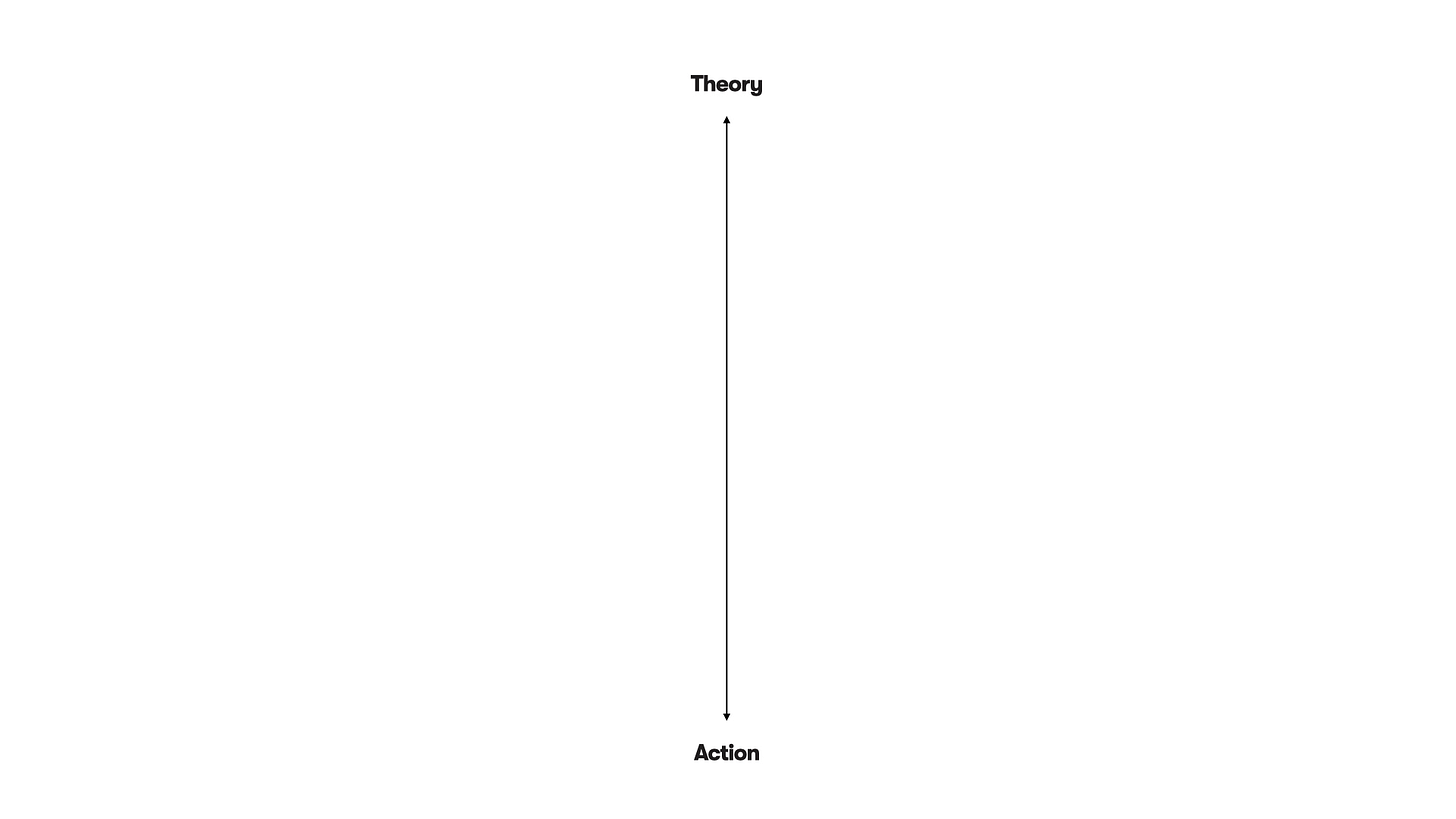Years ago, I wrote about “the triangle of disrespect”, and it resonated with a lot of people. As I’ve continued, I’ve realized I hadn’t actually solved anything, I’d just diagnosed it. That’s… crap strategy.
So here goes.
I’ve spent a lot of the last year thinking about a strategic binary that often determines success. People tend to approach strategy in one of two ways: Stats or Vibes.
Stats: obviously, statistics. At a higher level, research explained by numbers. This is often what the outcome of “data driven decision making” is, a mythical view of the world where statistics are less prone to mislead you than any other form of information. A stats client (or company, or agency, or strategist) is going to demand a percentage or an index to prove the sky is blue, numerically. Inevitably this leads to a certain kind of thinking and a certain kind of output. Stats strategy thrives in digital spaces (where measurement is comparatively straightforward), with healthy research budgets, and in places where marketing is seen as a cost centre, is generally insecure, or both.
Vibes: trends, culture, context. A lot of qualitative research lives here too, but every deck that uses screen grabs in lieu of data is radiating vibes strategy. The strength of vibes strategy is cultural relevance and resonance, which is often difficult to quantify. A good human insight is way more likely to be rooted in vibes than stats (even if you use stats to ‘prove’ it). You will know a vibes strategy when you see someone argue three articles makes a trend, when you see a wall of social posts as evidence, and when the narrative is carrying more of the load than the metrics (because not everything can be measured, yet). Vibes strategy thrives in anything lifestyle, in companies and agencies focused on emerging markets and brand perception, and around the word “aspirational”.
You should be moving between these ends of the spectrum often, sometimes within the same presentation. Being stuck in one mode of the other will eventually leave you exposed.
But.
Like all good strategic reframings, there’s another axis on the chart. Strategy doesn’t just live on a spectrum of Stats vs Vibes. It also lives on a spectrum of Theory vs Action.
Theory is what you are going to do (and why). Action is how you are going to do it (and why). Both are integral. Both get called ‘strategy’, and when people discuss the work without clarifying which one they mean, they often end up getting pulled into petty arguments that distract from successfully completing a project.
Brand strategy is theory. A creative brief is theory. A comms plan is action. Go-to-market plan is action. Theory generally lives pre-idea. Action generally lives post-idea. You cannot succeed without a mix of theory and action in your work. You will either create high minded trash, or vapid beauty. No one’s interested in either for very long.
Where it starts changing the game, is combining these two models. Ensuring that when you approach a strategic problem, you are thinking in all four quadrants.
This doesn’t seem so meaningful until you realize how many great culturally relevant briefs don’t really consider effectiveness and measurement, or how many brilliant go-to-market plans are completely lacking a problem to solve other than “spend client money on best practices”.
Strategy lives in four quadrants. If you commit to using all of them in your approach to your job, you will vastly increase your chances of success on a project by project basis.
Strategic process is a goldfish. It grows to the size of its environment and/or timeline. But if you can try to at least address each of these quadrants, you can ensure you’ve thought about it from multiple angles, and should be able to defend and optimize your work.
Better than that: if you commit to developing your skill set in each of these quadrants, you will actually be good at your job, regardless of which client you’re working with, what agency you end up at, or what media plan you need to work with.
For most of my career, I’ve worked with strategists who lean toward one end of these spectrums, or one of these quadrants. Some of them have managed to turn that into a style or approach that makes them distinct in the market and powers their rise (which, awesome), but the vast majority of people who have leaned hard into strategic specialization have been a little frustrated at the limits it places on them. And the truth I’ve observed is that even the single-focus stars tend to rely (very) heavily on a team of people that fill in the gaps in their process.
But departments are getting smaller. Tools are getting better. And when I say you will thrive if you learn to live all across the matrix of strategic approaches, I don’t mean future you, I mean present you.







If you’re gonna drop this level of gold, we the people can be patient. Every strategist should sit with this and take notes, thanks Jon!